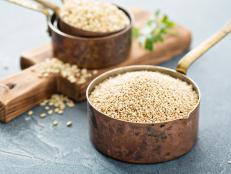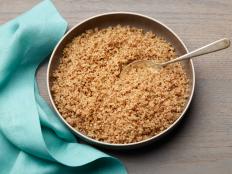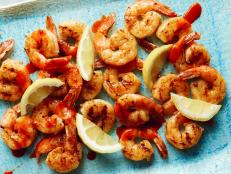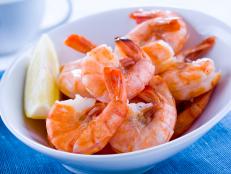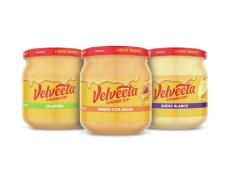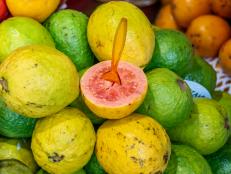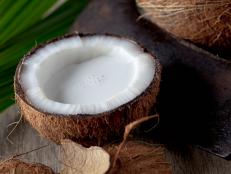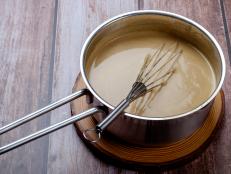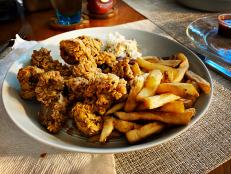The Latin Pantry
FRUITS & VEGGIES
Ajo: Garlic
Avocado: Often treated as vegetables, these fruits date back to the time of the Aztecs, Mayas and Incas. They come in various sizes and their green skin turns black as they ripen. Store them at room temperature to speed up ripening.
Boniato: Also known as white sweet potato, Florida yam and camote, this tuber looks like a sweet potato but is shorter and contains a white, semi-sweet and mealy flesh. Sensitive to the cold, boniatos are best stored at room temperature and used quickly.
Canned pimientos: Use these small sweet red peppers as garnish for just about any dish or pair them with Spanish olives and cerveza (beer) for a simple snack. Refrigerate open canned pimientos for up to two months.
Chiles: Canned or fresh, dried, whole and powdered, chiles (peppers) are quintessentially Latin American. Stock a variety, including ancho, cayenne, chipotle, jalapeno, pasilla and Serrano.
Chipotle peppers in adobo sauce: Typically sold in a jar, these give salsa cruda an extra kick or add a smoky twist to any sauce.
Hearts of palm: Add extra saborcito (flair) to any plain ensalada (salad) with these canned treats. Refrigerate after opening and use them within a week.
Lemons and limes: These give a citrus kick to marinades, dressings, beverages and ceviches.
Mango: When fully ripe, this fruit has a deliciously sweet, fragrant and juicy flesh. It works in simple salads, desserts or as a sweet balance to a savory dish.
Manzanilla olives (Spanish olives): Both a garnish and a snack, these are key to adding a zesty flavor to arroz con pollo and picadillo. In a variety of sizes, they're often stuffed with pimento. Once opened, they'll keep refrigerated for six months.
Papas: Potato
Pina: Pineapple, fresh or canned
Plantanos (platains): A member of the banana family, plantains are always served cooked. Look for a brownish-black skin to know when they're ripe.
Scallion: Known as "small green onions" in Brazil and "Chinese onions" in Peru, scallions tend to be milder tasting than other onions. Use both the white bottoms and the green tops.
Spanish onions: Spanish onions come in three colors — yellow, red and white. Yellow onions are full-flavored and are a reliable standby for cooking almost anything. The red ones are good for grilling and served fresh. White onions are the traditional onion in classic Mexican cuisine; they have a golden color and sweet flavor when sautéed.
Tomatillos: Coming in a number of colors when ripe, including, yellow, red, green or purple, tomatillos are a key ingredient in fresh and cooked green sauces.
Yuca: Also known as manioc or cassava, this is a white, starchy tropical vegetable. Yucca is used fresh or frozen in many South American and Caribbean recipes.
HERBS & SPICES
Adobo: Dry adobos are spice rubs for meat, fish or poultry that typically include salt, garlic, black pepper, turmeric, onion powder and other spices depending on your preference.
Cilantro: Also called coriander, this leafy herb is particularly popular in Mexican, Andean and Brazilian cooking.
Cinnamon: Named for the island where it originated, Mexican cinnamon is also known as Ceylon.
Cumin (comino): Strongly aromatic, this distinctive spice is featured in the foods of North Africa, Mexico, India and western Asia.
Recaito: A base for stews, soups and meats, recaito is made with garlic, cilantro, onion, vinegar and spices.
Sazon: This seasoned salt mixture is used throughout Latin America and Mexico cooking and often includes cilantro, achiote and garlic.
Saffron: The small orange stigmas from a crocus plant, saffron boosts a dish's color and flavor. An indispensable ingredient in paella, it's also used in other rice dishes, soups, curries and even some bakery products.
MEATS
Bacon: Cured and/or smoked, bacon is any certain cut of meat taken from the sides, belly or back of a pig.
Chorizo: A spicy sausage, Mexican chorizo uses fresh pork while Spanish chorizo uses smoked pork.
LEGUMES & GRAINS
Beans: Whether you call them frijoles or habichuelas, always keep a variety of dried or can beans. Black, pinto and red kidney are most common. Always rinse canned beans to remove excess sodium.
Masa harina: Made from dried masa (ground, dried corn that has been treated with lime), this traditional flour gives heft to tamales, tortillas and sopes.
Quinoa: Pronounced "KEEN-wah," this tiny, ancient grain is high in protein and nutrients and can be used like rice or couscous.
Rice: Keep two kinds of rice on hand — long-grain for dishes such as arroz blanco or arroz a la Mexicana, and medium-grain for arroz con pollo and rice pudding.
Tortillas: Made with both corn and flour, tortillas are essential for preparing tacos, enchiladas and burritos.
OILS, FATS & OTHER ADD-INS
Coconut milk: Used as a base in the Brazilian stew moqueca, canned coconut milk will last refrigerated for a few days after opening.
Condensed milk: This sweetened thick canned milk is often used in desserts.
Guava paste: Add this fuchsia-colored, sugary paste to everything from sweet barbecue sauces to Cuban pastelitos de guayaba.
Manteca: Lard
Olive oil: Use it in salad dressings, drizzle it on white rice while reheating or add it to the pan when frying a Cuban bistec de palomilla or plátanos.
Tabasco or jalapeño sauce: These pepper-based sauces add zing to anything from Nicaraguan shrimp cocktail to fajitas. Store bottles in a cool, dry place for up to five years.
Tomato sauce: Keep several cans on hand to use as the base for many Latin dishes, from Caribbean sofrito to Spanish gazpacho and Ecuadorean seco de chancho.
Vinegar: White or red wine, vinegar is essential to many marinades and dressings.
SWEETS
Chocolate bars: Use dark-chocolate bars to make mole sauces and bittersweet ones for hot chocolate. Keep them wrapped and away from direct sunlight for no more than a year.
Dulce de Leche: Both a sauce and a caramel-like candy, dulce de leche is popular across all Latin America cuisines.
OTHER MUST-HAVES
Queso fresco blanco: This salty, firm, white cheese is similar to mozzarella or Muenster.
Café (coffee): Use very fine grounds for espresso brews, medium-coarse for regular coffee and extra-coarse for French presses. To preserve taste, refrigerate ground coffee in an airtight container for up to two weeks.























